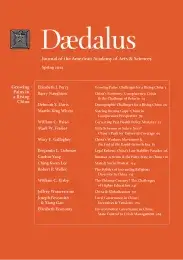China’s Workers Movement & the End of the Rapid-Growth Era
China's rapid economic growth period was predicated on a development model that exploited the stark divide between its urban and rural citizens. As the workshop of the world, Chinese factories tapped the vast surplus labor of the countryside. Rural workers' expectations were low, but their desire for new employment opportunities was boundless and their numbers seemed limitless. Three decades later, these conditions have changed: workers' expectations are higher and their numbers are diminishing as the population ages. Labor disputes and strikes are endemic as the expectations and aspirations of workers outpace the nation's slowing growth rate. Compared to the anemic labor movements in the West, China's workers are emboldened, though they are still hampered by a repressive political environment and strict constraints on freedom of association. Conflict is spontaneous and settlement is ad-hoc. Like many authoritarian regimes, the Chinese Communist Party has difficulty committing to the institutionalization of labor conflict as it heightens the possibility of social empowerment. The state remains in charge, which also means that labor-capital conflict almost invariably metastasizes into a confrontation between workers and the state.
